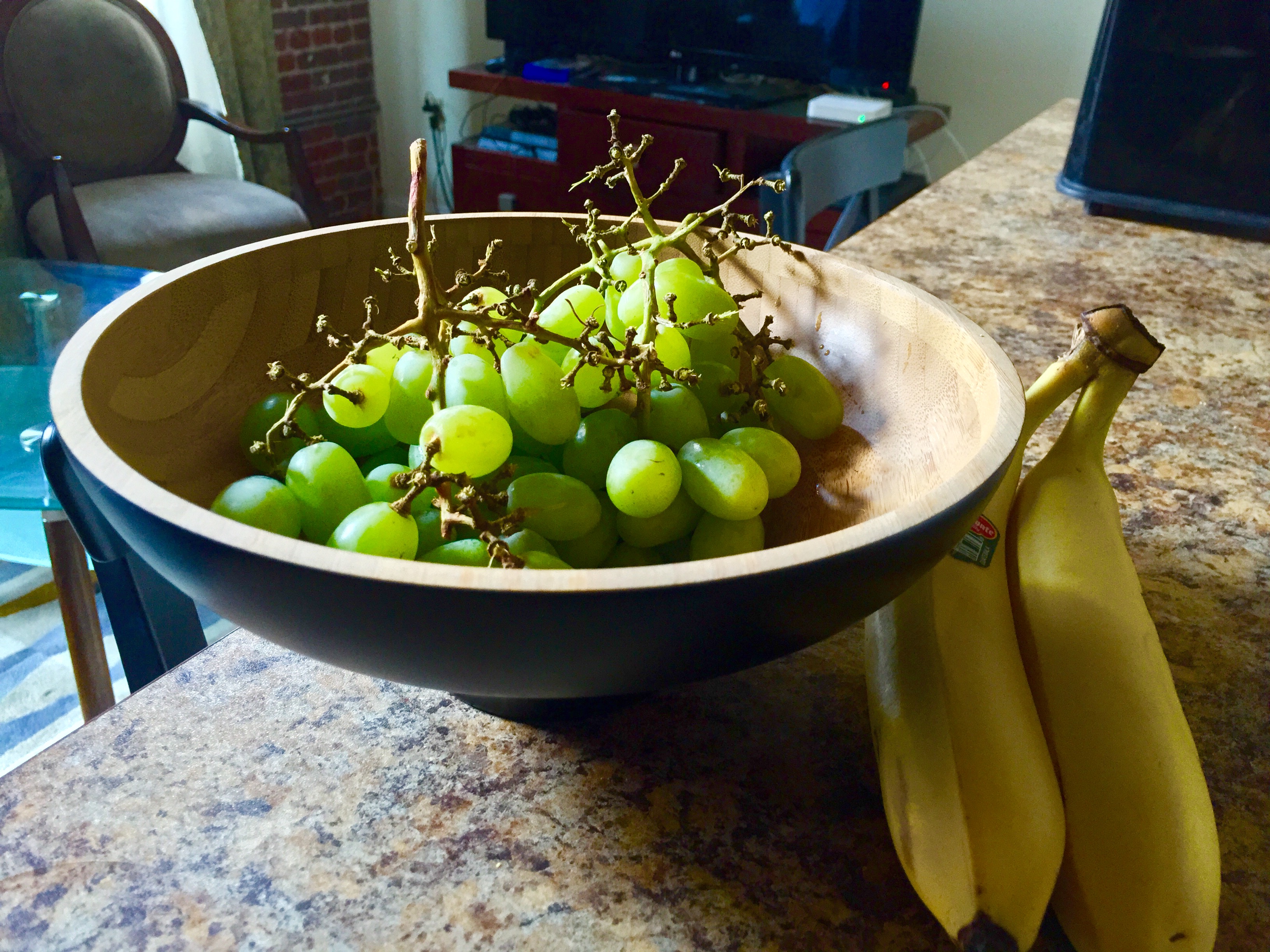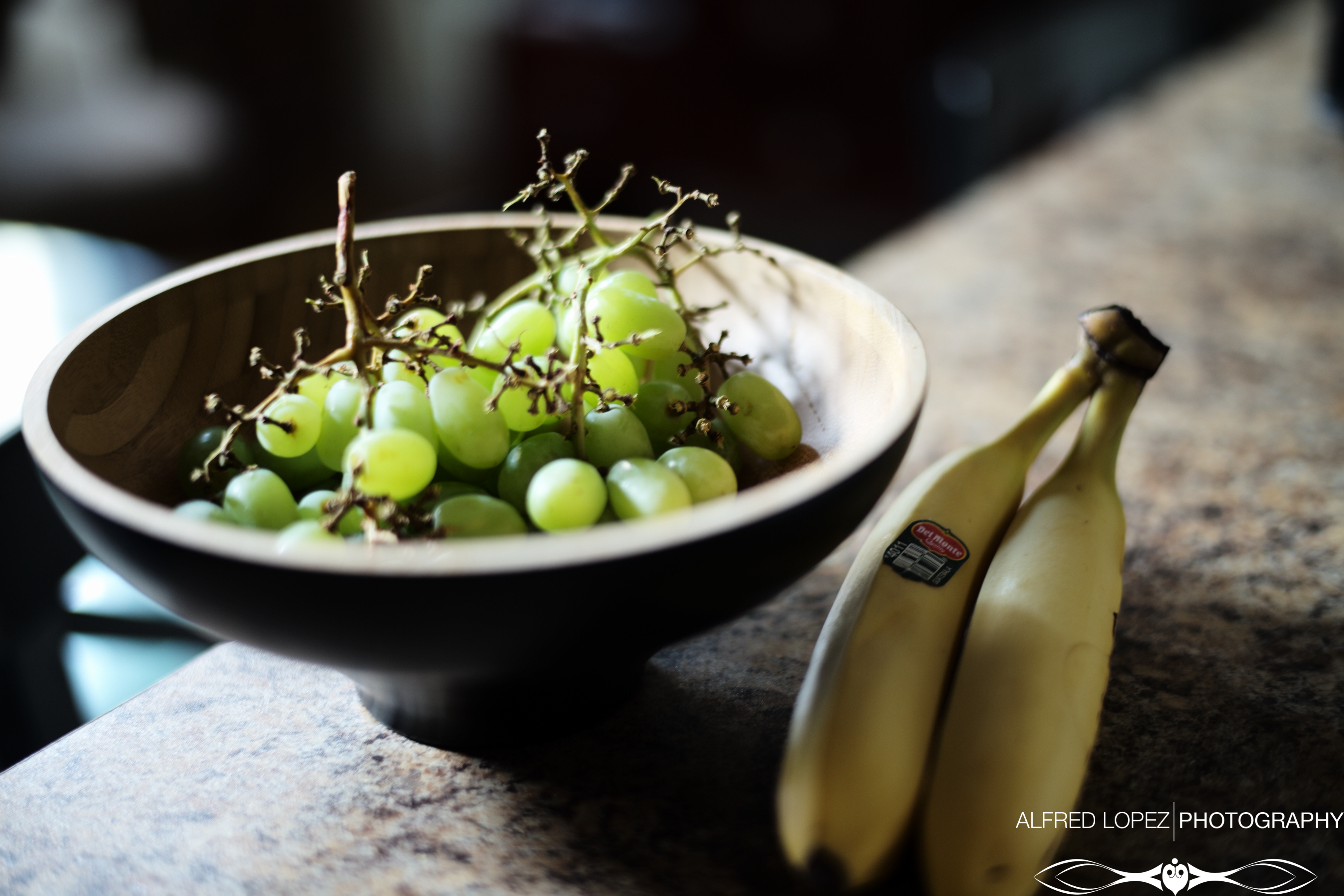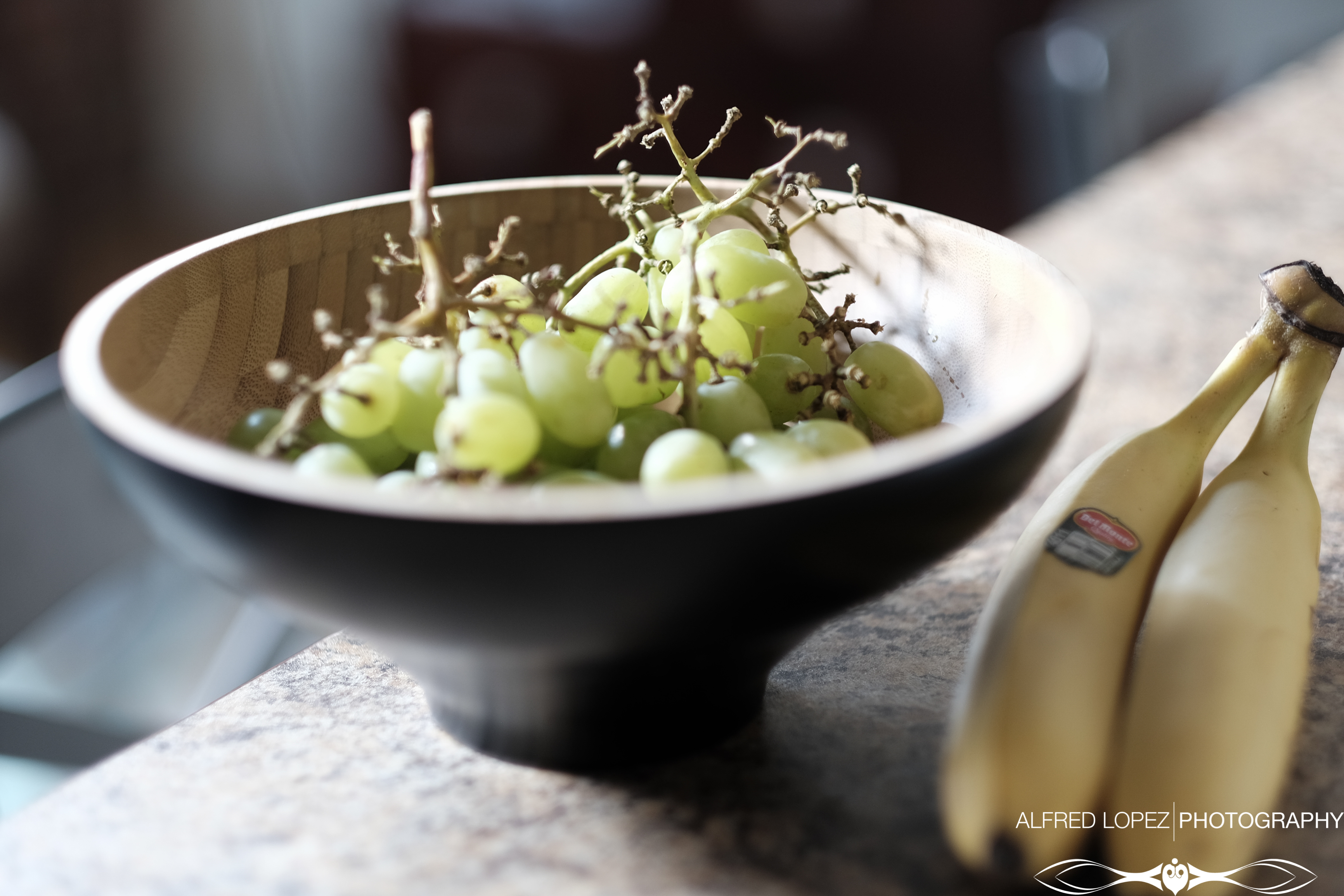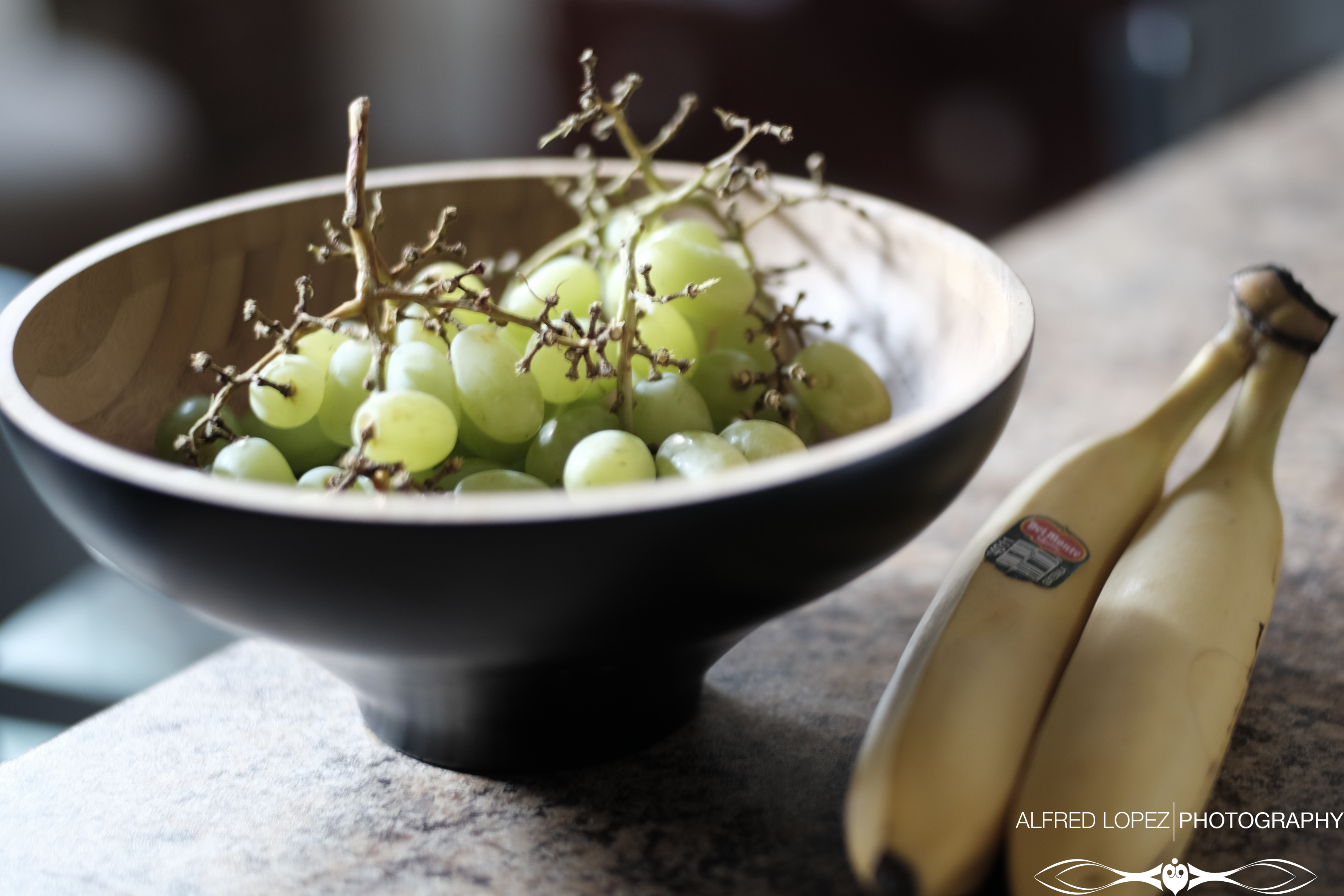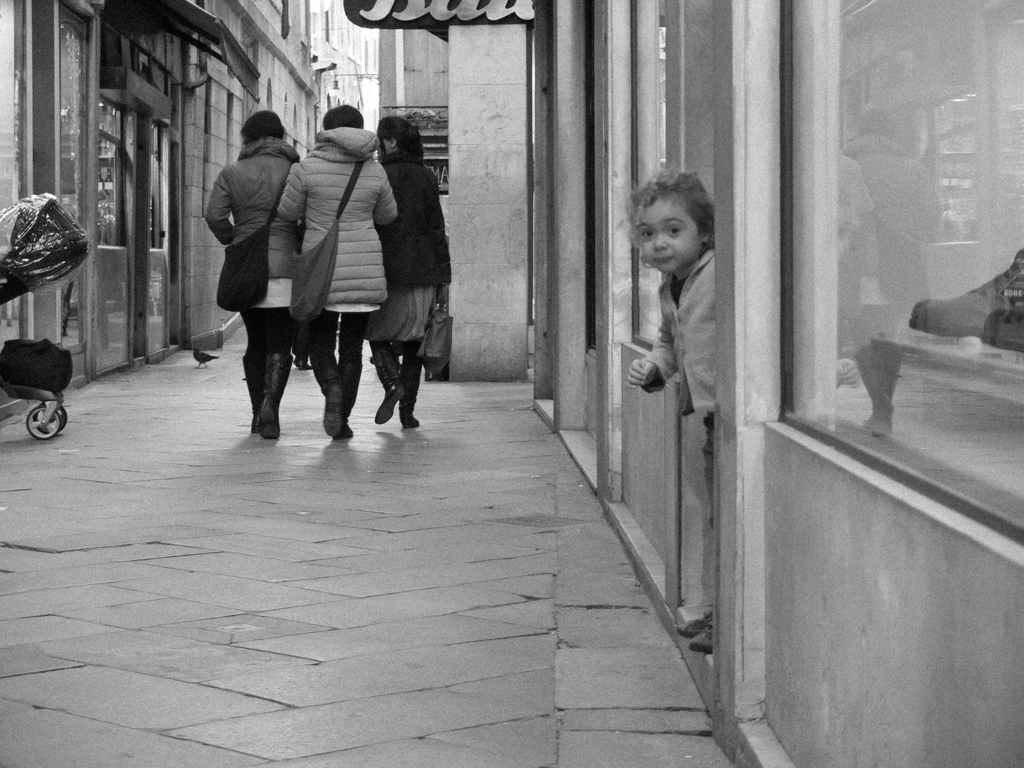Apple has been talking smack about photography by saying that you can take phenomenally fantastic photos from the iPhone 6’s camera. The photos on their propaganda campaign are quite impressive, but I believe the following about cameras in general:
All cameras can take great pictures, provided that the conditions for the cameras are met.
— Me
This gives a new perspective to the resentful remarks and utter disdain of those jealous of people who take great photos with expensive gear. People who scoff at those photos and say “<scoff> You don’t need an expensive camera! I can do that with my iPhone! It’s the photographer, NOT the camera that takes great pictures!”, etc. I say “expensive” and not “professional” because there is a threshold where some “not-so-expensive” cameras can give pro gear a run for their money. Ok, so Mr. Bitters up there has a point, but it’s not that black and white.
For my demonstration, I chose the most boring subject I could find: a bowl of grapes and some bananas on the counter. Now, currently, I “think in Leica” (yes; I realize that’s such a pretentious remark). By this, I mean, when I look at a scene, I know what it’ll look like (to a fairly high degree) before pressing the shutter. So I knew this image would look good enough, but sometimes what you see with your eyes doesn’t translate well into a photograph.
Anyway, I shot the grapes with the iPhone 6, a Leica M with the Summilux 50mm ASPH lens, a Fuji X-T1 with the XF 56mm, and, finally, the same Fuji with the Summilux 50mm, just for fun. All four photos are straight out of the camera in JPEG. As you can see, there is a stark difference in the aesthetics of the photos. Though it’s possible to get the iPhone photo to look like the Leica photo or even the Fuji one, it will take some heavy Photoshop-ing to accomplish it. These photos also demonstrate how isolating a subject, could make an image, as a whole, look pleasing. And because of that, it also shows that how you look at a scene affects the final look of it. For example, if you see beauty in the bowl of grapes, but nothing around it, then you’ve decided to isolate the subject from its environment. You can also look at the scene as a whole or pick out a few elements, or just the background, etc. So to realize your vision, you need a tool that can grant your wishes.
While in Italy, I had to change my way of looking at a scene when I used the Fuji X10 because it wasn’t adequate to as many conditions as my Canon 7D, but I wanted to use the X10 as much as possible because of its size and discreetness. Even though I felt that I was going to miss some “artistic opportunities”, I truly love all the images I took with it. Looking at the set of photos, people would think that I batted 1000.
So the camera you carry needs to be able to realize your vision, whatever that may be. If it can’t, it doesn’t mean the camera is no good. It just means you need another tool for it. Alternatively, you can just change your paradigm and be content with what you have.
